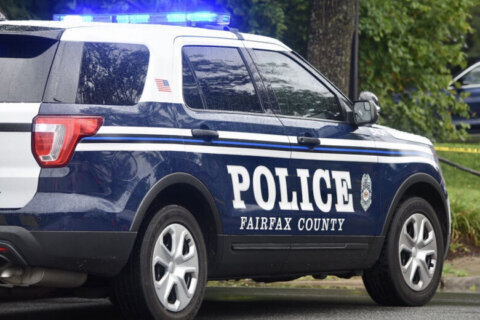This article was written by WTOP’s news partner InsideNoVa.com and republished with permission. Sign up for InsideNoVa.com’s free email subscription today.
Fairfax County officials are looking to buy more electric vehicles (EVs) for the county’s fleet, increase the number of publicly accessible charging stations at governmental sites and implement fees to recover costs and keep drivers from dawdling in those spots.
A $1 trillion infrastructure bill recently signed by President Biden authorized a nationwide network of EV-charging stations and allotted $5 billion to help states build them, said Susan Hafeli, deputy director of the county’s Office of Environmental and Energy Coordination, told the Board of Supervisors’ Environmental Committee Dec. 14.
Supervisors in 2018 approved an Operational Energy Strategy that envisioned an accelerated transition to electric vehicles and the use of 100-percent non-carbon-emitting fuels for county fleet vehicles by 2030.
The plan seeks to have Level 2 EV-charging stations, which typically can fully charge a vehicle within four to six hours, installed at up to 20 major governmental facilities in the county.
Supervisors so far have authorized slightly more than $3 million for the EV-charging-stations initiative and approved a contract with ChargePoint for the installations. The vendor must maintain the stations or lose transaction fees if sites are inoperable, Hafeli said.
EV-charging stations, most of them Level 2, nearly are finished being installed at several county facilities:
- The Government Center will have eight dual-port stations and one single-port station that will serve 17 parking spaces in a secure garage with no public access. The project’s next phase will install charging stations on the surface lot.
- Public Safety Headquarters will have one dual-port station serving two parking spaces.
- The Herrity Building, Merrifield Center and Pennino Building each will receive three dual-port charging stations serving six parking spaces. Level 2 stations are considerably less costly than Level 3 ones, which can charge a vehicle from zero to 80 percent within 30 to 40 minutes. Level 3 stations also entail greater demands on the electrical infrastructure, Hafeli said.
Supervisors, as part of the county’s fiscal year 2021 budget-carryover review, authorized 12 new Facilities Maintenance Division positions to assist with the electric-vehicle efforts. Officials have not encountered equipment and supply-chain challenges yet regarding the station, but such issues may crop up as demand for such services increases.
County officials have identified 79 county-government and Fairfax County Park Authority sites as potential locations for Level 2 EV-charging stations. Factors staff considered when evaluating possible locations included location, modifications required to accommodate the increased electrical load, expected demand and proximity to other charging station, Hafeli said.







